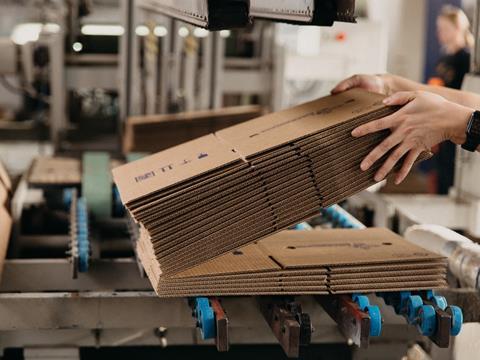
According to Cepi’s final statistics report for 2022, consumption of paper and board declined by -3.5% in 2022, largely due to high energy prices and economic issues. Although the European sector’s trade balance remains positive, it is feared that a decline could threaten the region’s global competitiveness.
The report suggests that the decrease in consumption was especially steep at the end of the year, overtaking previous estimations. This is attributed to record high energy and raw material prices driving a recession on the continent.
Energy costs have also been linked to temporary machine stops in the second half of the year, with the report presenting a 6.1% decrease in paper and board production in 6.1% – a greater decline than the 4.7% reduction during the COVID-19 crisis in 2020.
So, too, are high electricity, gas, and CO2 prices thought to have impacted paper recycling mills on a disproportionate scale. Combined with lower packaging production, paper for recycling utilisation is thought to have decreased by 6.4% throughout the year.
Nevertheless, multi-year trends for pulp and paper manufacturers remain positive, Cepi says. Packaging paper and board were said to remain one of the main drivers for growth, although production is said to have decreased by 4.6% in comparison to 2021. This is feared to be another contributor to the potential weakening of the sector’s competitiveness.
The report states that pulp and paper producers have receives high investments in previous decades – proportionally to their size and resources – but asserts that even larger investments will be needed to meet the EU’s climate targets.
Jori Ringman, director general at Cepi, says: “Current economic conditions mean that the cost of the projects in which pulp and paper companies are already engaged have increased, while regulatory predictability has decreased. Our ambition as an industry has not, and we will continue to propose affordable and scalable solutions for the EU’s transition towards a circular bioeconomy.”
Cepi’s preliminary statistics report for 2022 previously identified a 5.9% decrease in production in comparison to 2021. High costs, machine stops, and stalling economic growth were listed amongst the contributing factors.
The final statistics report follows Cepi’s previous criticism of the key proposals of the ‘Fit for 55’ legislation, which set out to reduce the EU’s CO2 emissions by 55% in the lead up to 2030. It asserted that the rules could undermine the pulp and paper industry’s decarbonisation efforts and bioeconomy developments by creating contradictory legal positions surrounding carbon capture and biomass.
If you liked this article, you might also enjoy:
The Lidl approach to packaging sustainability
How did Brazil achieve its 100% aluminium can recycling rate – and can it be replicated in the EU?
Experts have their say on the EU’s Packaging and Packaging Waste Directive revisions
A deep dive into the most important packaging sustainability trends and solution











No comments yet